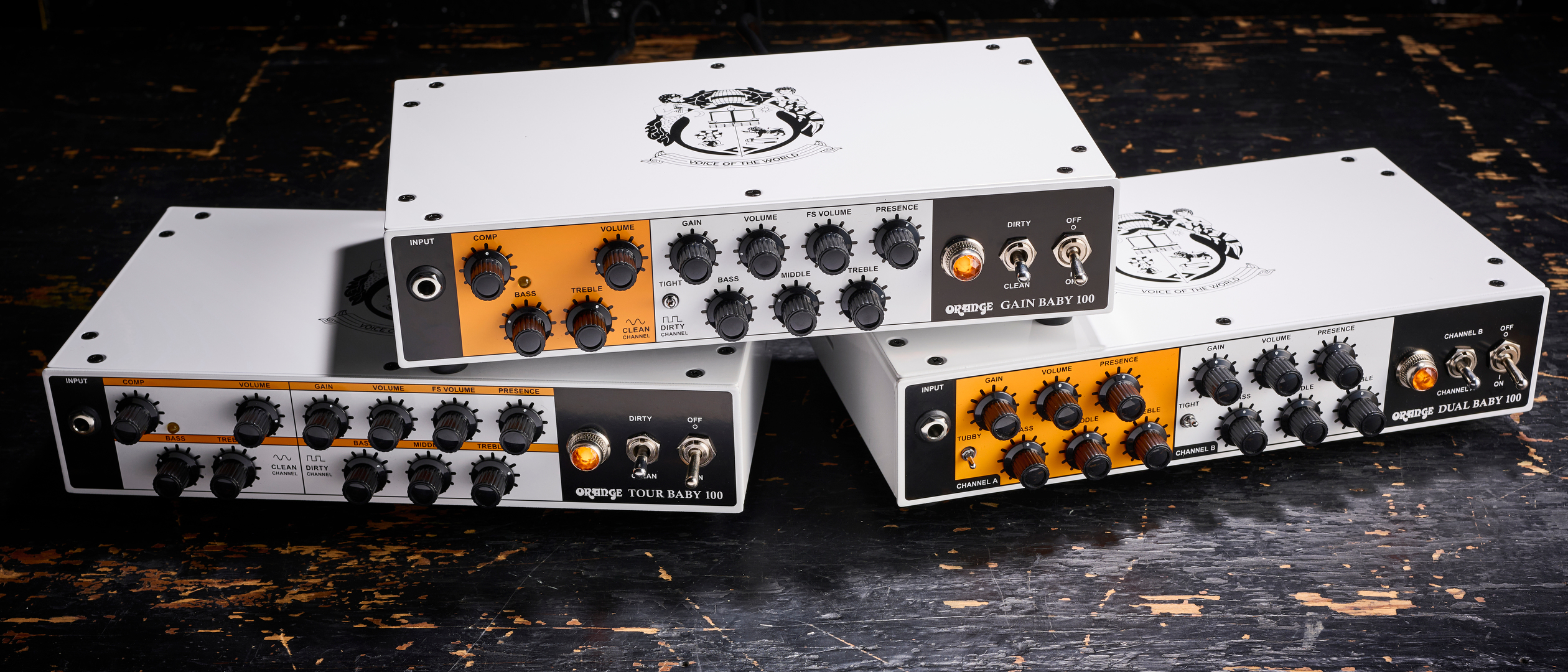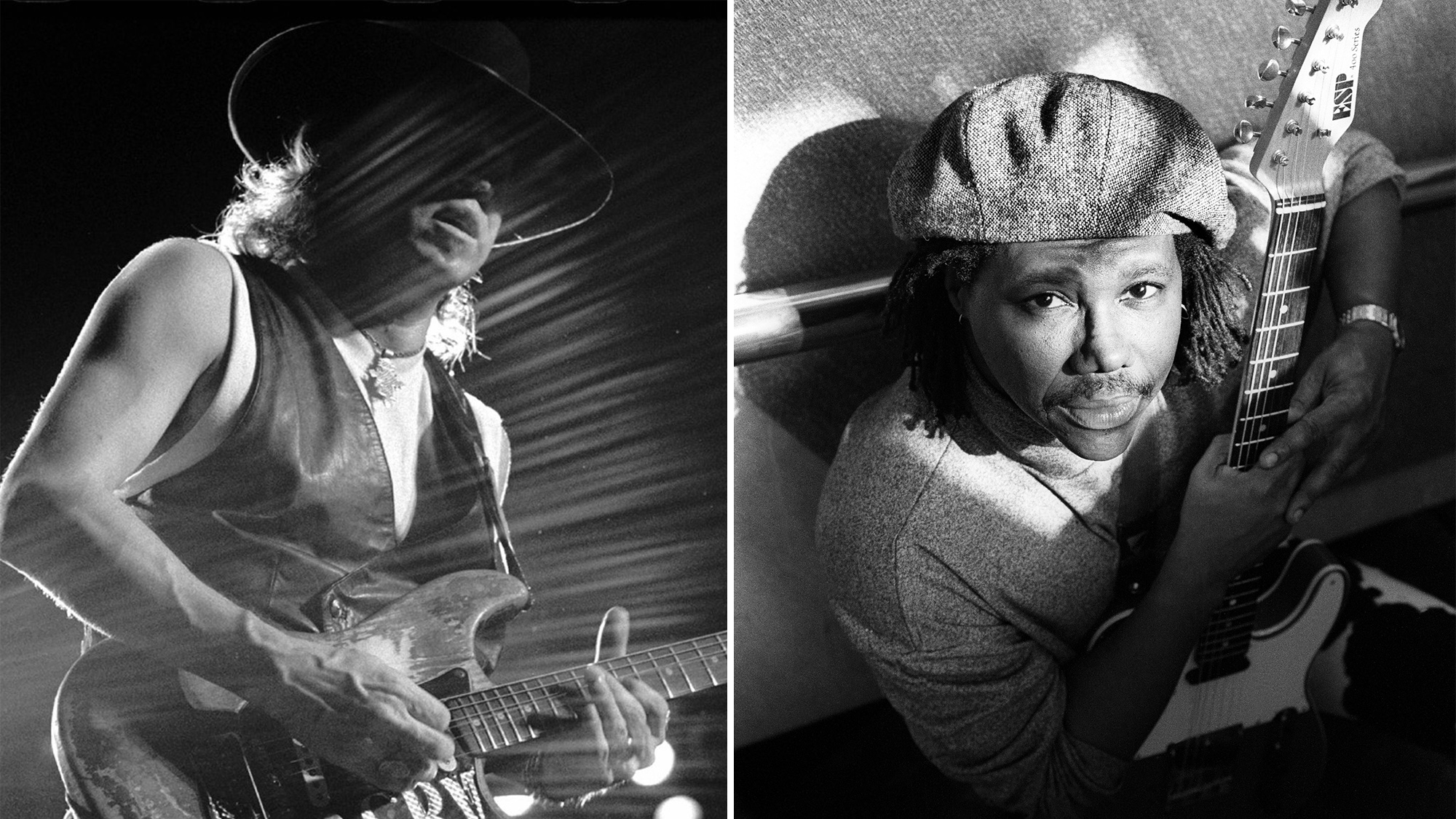Guitar World Verdict
Here, Orange has distilled its distinctive tone and styling into a no-faff, highly practical gig solution for modern use. The sound is as impressive as expected and I can imagine them becoming perennial darlings of travelling bands and sound hire companies alike with good justification.
Pros
- +
Great choice of channel combinations between all three models
- +
The 100 watt head sound in a small but tough format
- +
Can be used to go direct without a speaker load connected
- +
Compressor control is a useful addition on the Tour Baby and Gain Baby
Cons
- -
Zips on the supplied gigbag could be a little more robust
- -
A tight switch on the Tour Baby dirty channel would be welcome
- -
No foot switch included
You can trust Guitar World
What is it?
As one of the UK’s leading amplifier brands, the often rather eccentric Orange company has made an historic name for itself with its attention grabbing aesthetics and tonal stylings.
The original Orange heads were oversized behemoths along with matching 4x12s and in combination were renowned for walloping bottom-end and almost fuzz-like saturation.
However, the days of concert stages draped in backline are some way behind us. Indeed, the climate for travelling musicians has never been more inclement due a storm of transportation costs and border bureaucracy making the notion of touring internationally with a full Orange stack an unlikely proposition for many.
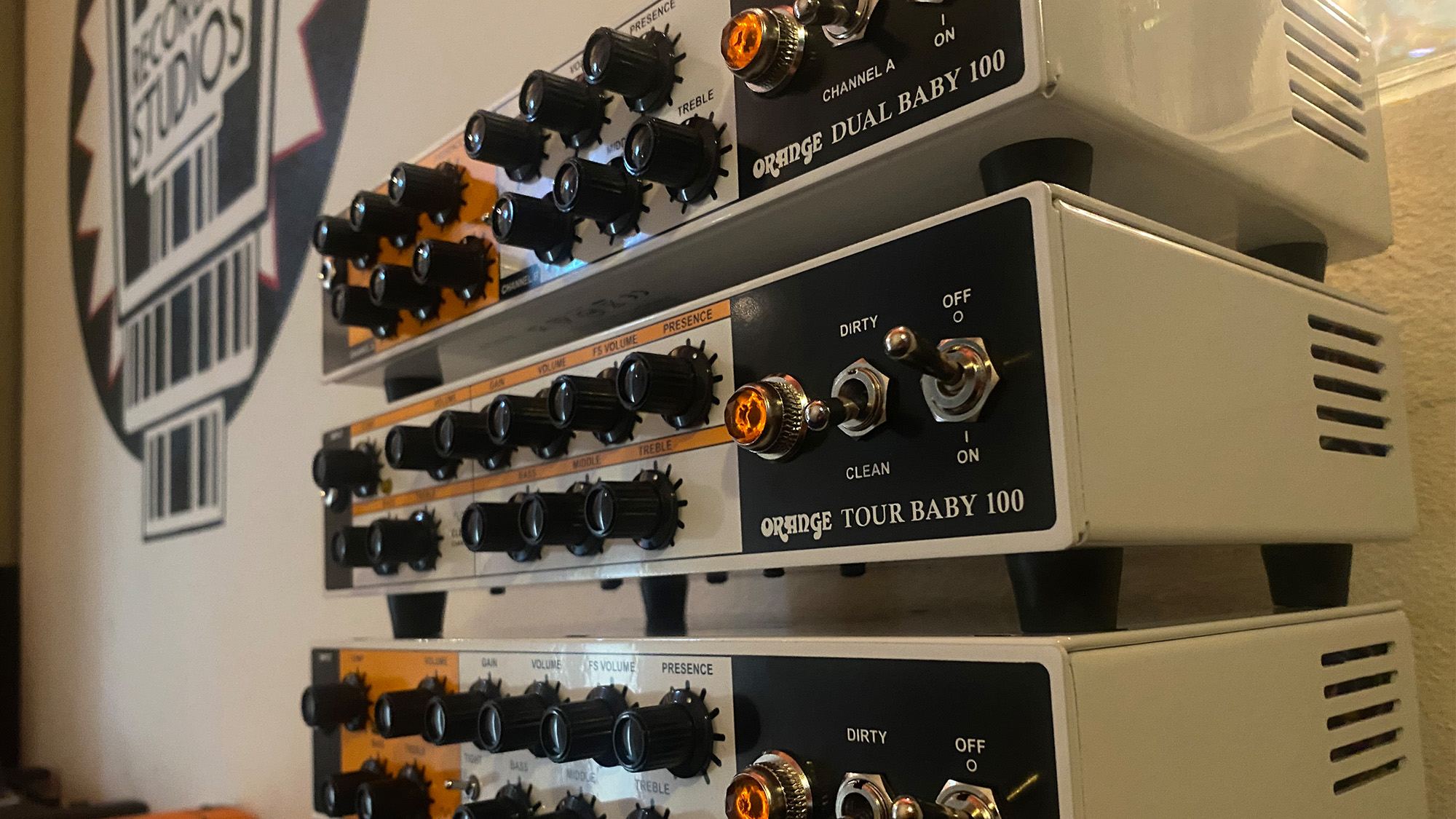
A simple solution is offered here in the form of three powerful, portable, ‘throw-and-go’, solid-state stage amplifiers, collectively named the Baby 100 Series: Gain Baby, Tour Baby and Dual Baby.
This purposeful range of slim chassis-mounted amps takes over –– in application, at least –– where the similarly compact Terror range left off, but instead taking a solid-state route into high-wattage country.
The ability to tour in large venues with just a guitar, a Baby 100 and perhaps a small pedalboard, whilst spec’ing a standard guitar speaker cabinet at each venue, could be a game-changer for those using planes, trains and automobiles.
Let’s see if Orange’s new offerings hit their target…
Specs
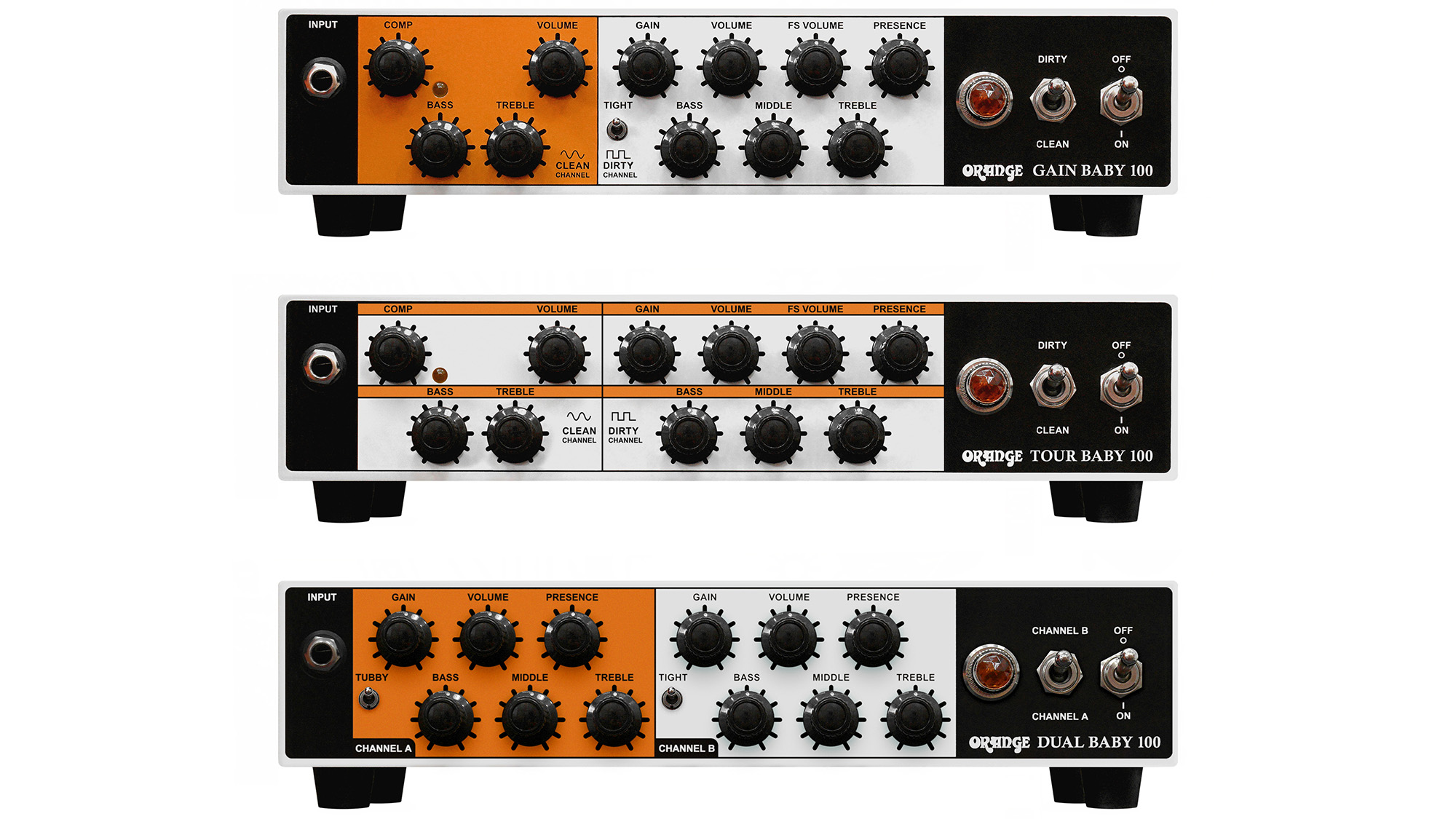
Launch price: $599/£459/€599
Type: Compact solid-state guitar amp head
Origin: China
Output: 100 watts (8 ohms), 70 watts (16ohms)
Channels: Two
Controls: Input, 2x speaker outputs, balanced XLR line-out, buffered effects loop
Connectivity: Inputs, outputs, headphone-out, effects loop emulated out etc.
Footswitch: Not included
Weight: 10.35 Lbs / 4.7 kgs
Dimensions: 300x80x195mm
Contact: Orange Amplification
Build quality/Usability
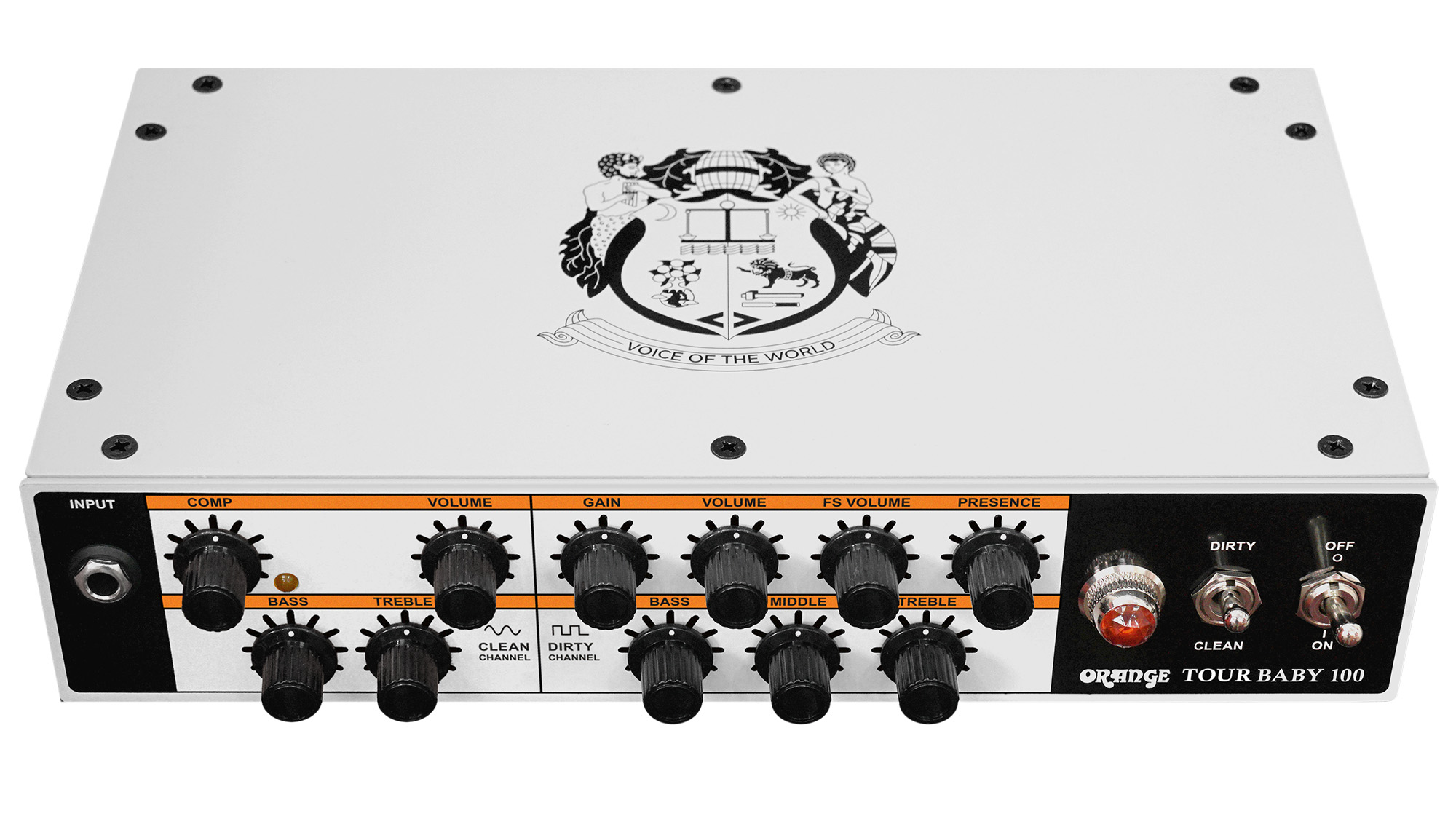
Presented in Orange-monogrammed gig bags, each the size of a small pizza, all three Baby amps are constructed from the same robust, enamel-painted, steel chassis with the classic orange, black and white livery.
The units have side vents and sit on four rubber feet which can either stand on an amp or be rack mounted. Internal construction and wiring is neat and robust with separate circuit boards for the preamp and power amp sections.
Weighing-in at just over 10lbs (4.7KG) each, the Baby amps feel reassuringly sturdy while remaining lightweight, particularly when compared to the 100-watters of yore. The bags feel like they're built to last too, although this test stops short of drop-testing the amps while in their padded bag.
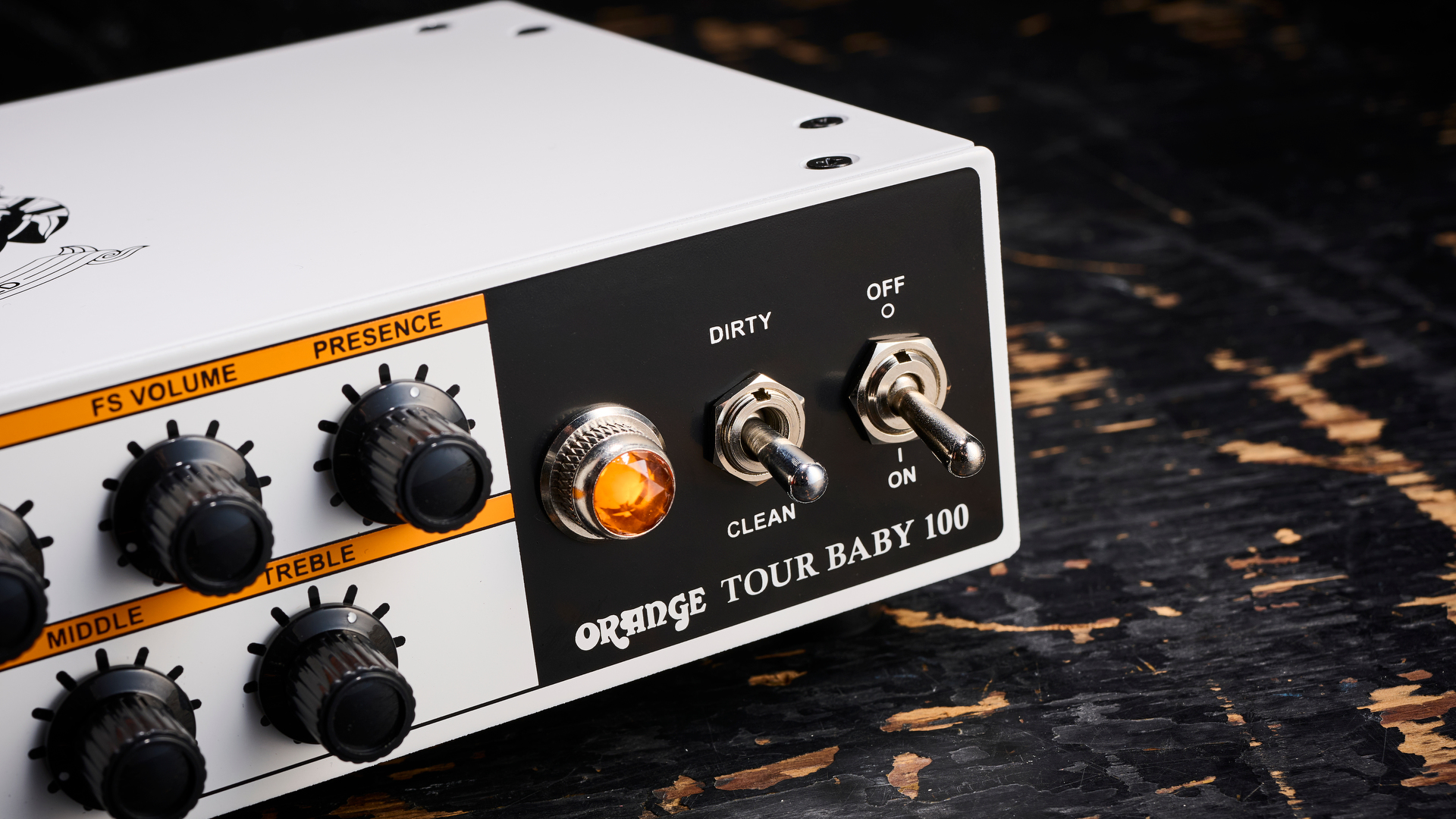
The fingerprint of Orange’s sizzling-saturation is here in heaps.
Orange has spared us the pain of working out what the controls do from the pictorial labelling of yesteryear, which will likely be met with approval during quick band changeovers.
The range, comprising the Tour Baby, Gain Baby and Dual Baby, all feature clean/dirty channel foot-switching, buffered effects-loops, the same 100-watt class A/B power section, two speaker outputs supplying 8 or 16 ohm to our speaker cabinets and a balanced line-out for external cab-sim processing.
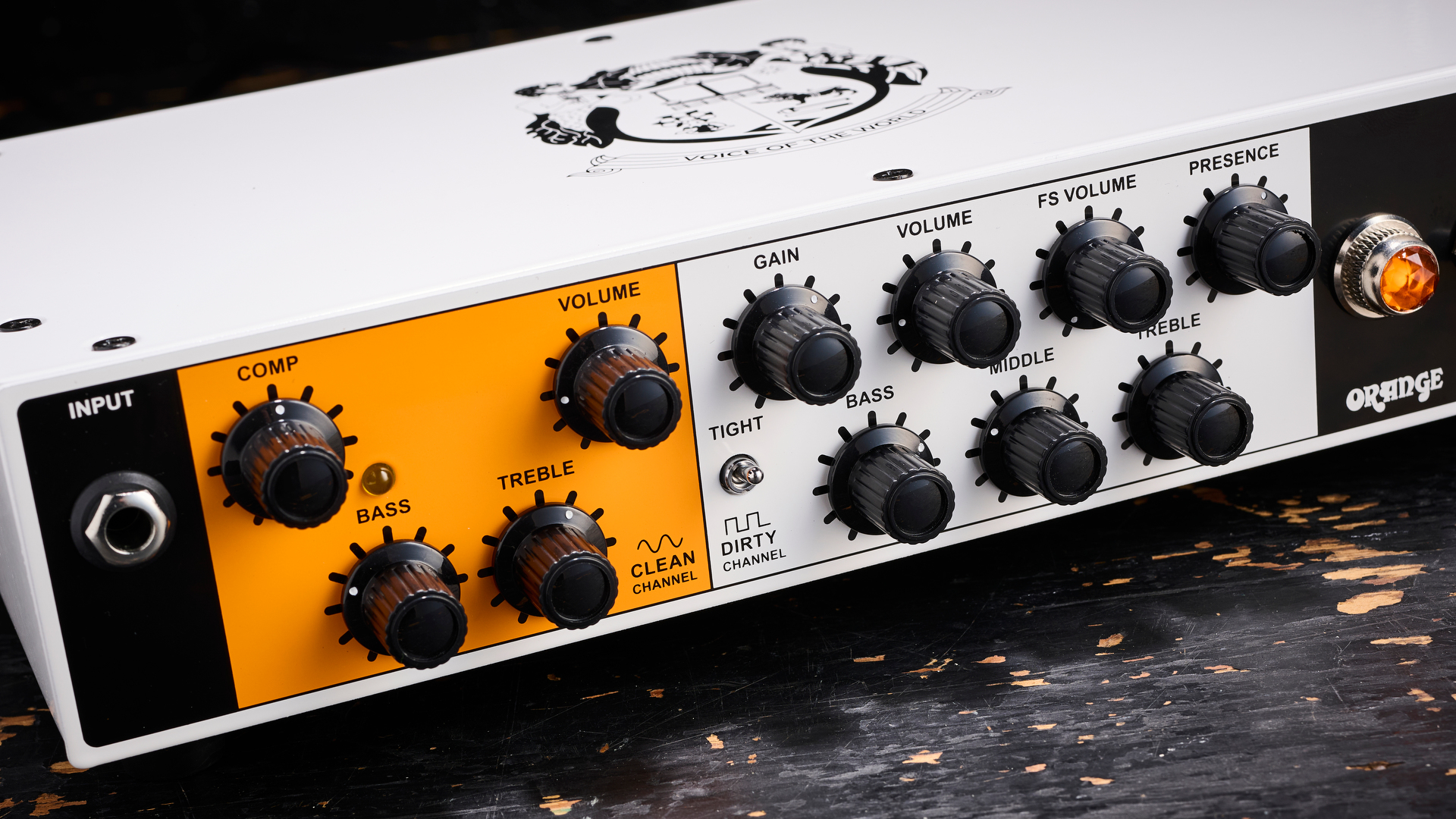
If you choose to take the line-out to a cab-simulator or impulse response unit, you'll be glad to hear that the Baby's DI output and effects loop offer exits for your signal that can be used without having to hook-up a speaker load. Handy for recording, silent stages and more.
To provide the gain, all three models have single-ended JFET preamp stages in place of valves, achieving the whole gamut of gain from icy clean to full-scale blitzkrieg. However, for all their similarities our triplets have distinct personalities which may have specific appeal to certain player’s tastes.
Sounds
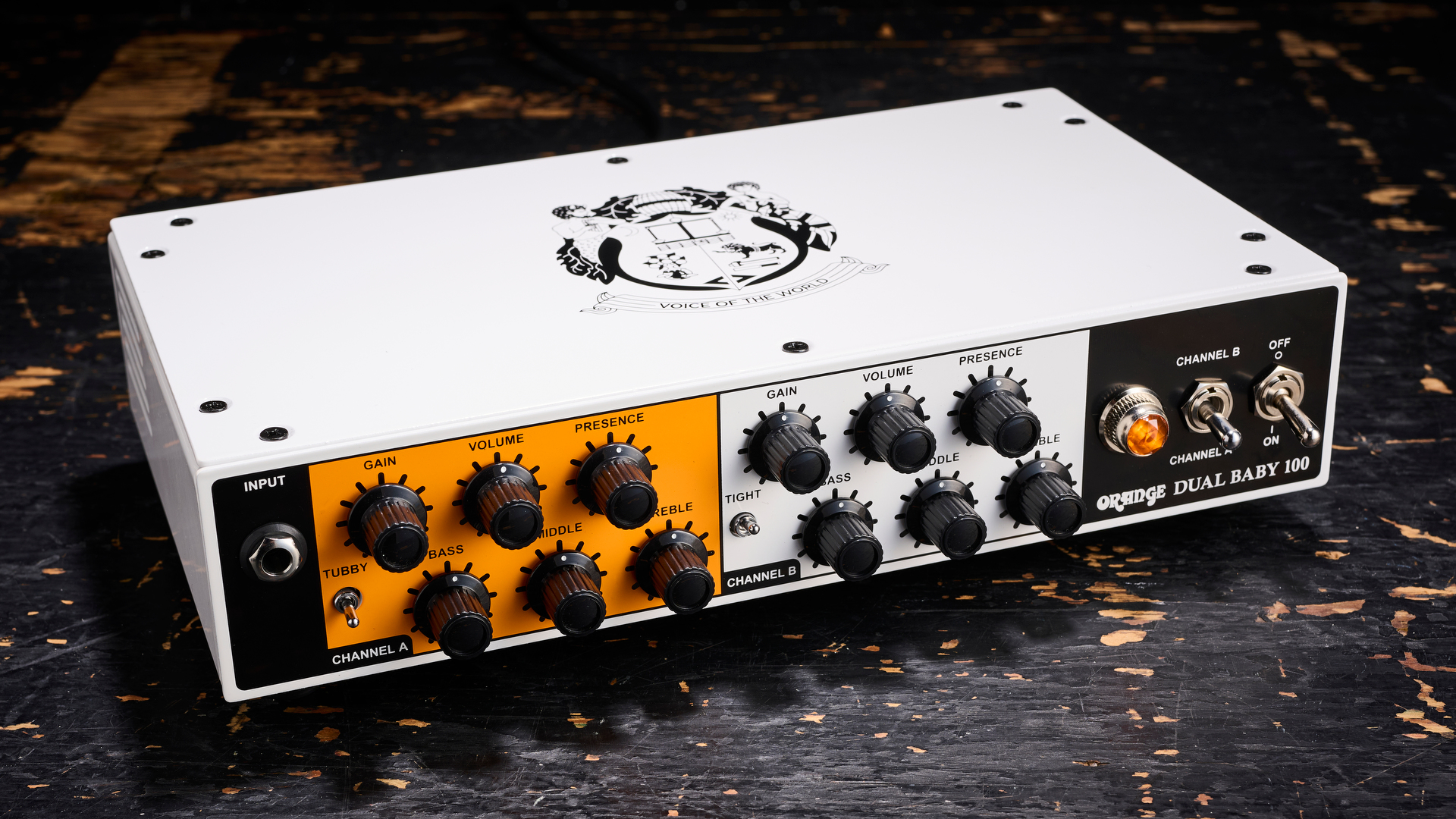
Orange Dual Baby 100
This model makes the most of its dedicated dual-channel design by offering more gain range for channel A, which in this case is not simply a clean channel but a full-range channel capable of crystal clean to full saturation.
The inclusion of middle, presence and thump controls allow for quite radical shaping. Indeed a pleasing Fender-ish clean tone can be approximated by dipping the mids and boosting the presence. Inserting reverb into the effects loop added the finishing touch, conjuring the kind of sound that can soak up minutes, perhaps hours.
Increasing the gain control reveals the raw gritty character that this amp excels in. It has the ability to sound quite punky and abrasive, unlike the more refined classic rock standard tone we know and love from Marshall et al.
It’s worth noting that the Dual Baby doesn’t have a compression control unlike the other two models. It’s an evenly-voiced clean channel that can happily receive inputs from active and passive pickups in addition to all manner of pedals.

Channel B brings the heat with the standard six controls (gain, volume, presence, bass, middle, and treble) augmented by a tight switch. This channel roars with even a gentle twist of the gain knob, the fingerprint of Orange’s sizzling-saturation is here in heaps.
Even a vintage output Stratocaster can be pumped up to hellacious levels with the gain and tone-shaping power available here. With a half-dose of gain there’s a splendid brightness to the top end that becomes progressively softer with increasing levels.
The amount of gain at full clip is impressive in its intensity, however should that become too cloudy or lacking definition, the tight switch comes to the rescue with increased focus and presence. This tight switch may be thought of as a vintage/modern switch due to the way it focuses more energy into the upper frequencies when in Tight mode.
The Dual Baby is distinguished by its ability to switch between two saturate-able channels, with more clean potential in the case of channel A and more smooth saturation on-hand from channel B.
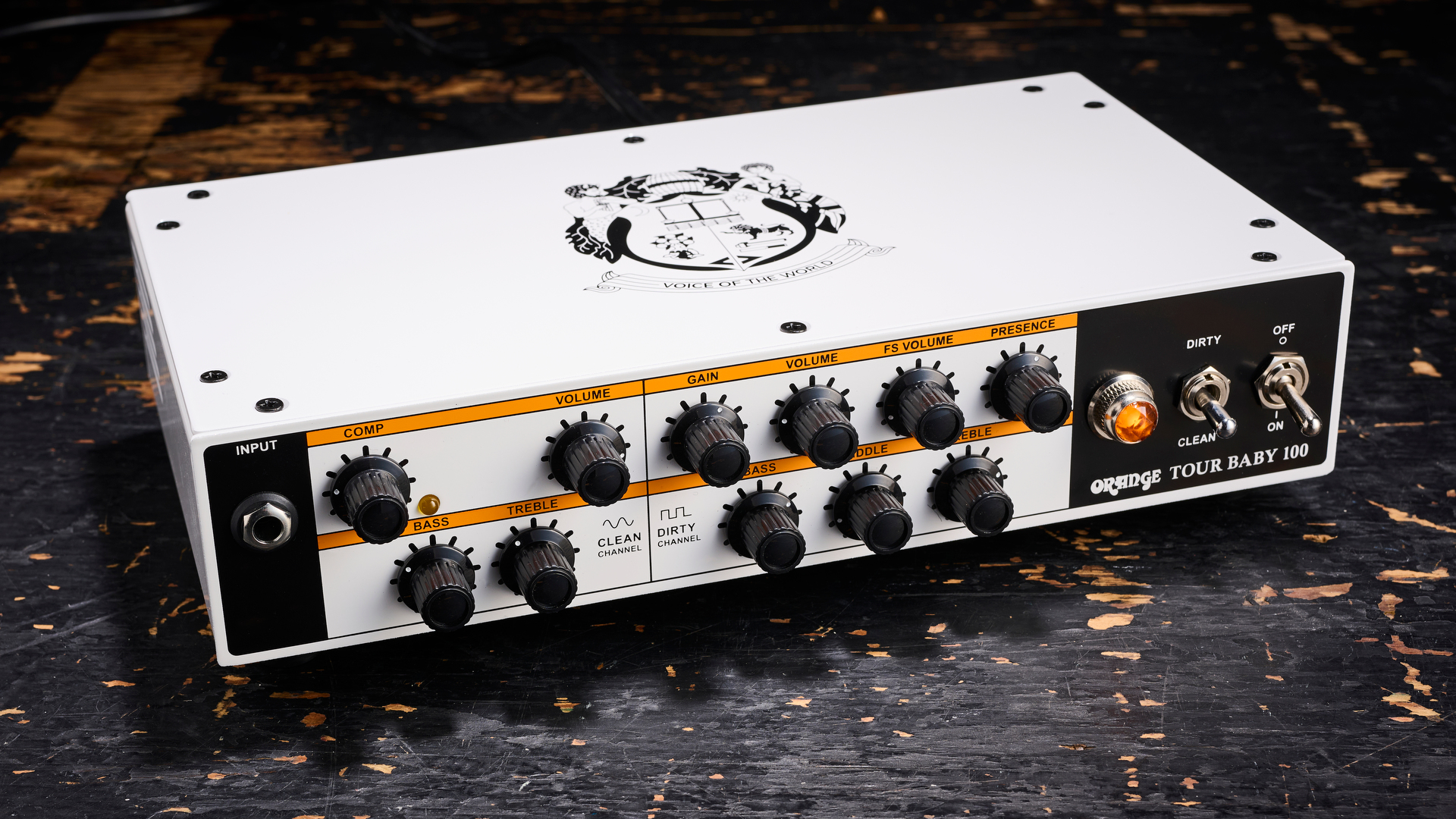
Orange Tour Baby 100
The Tour Baby stands apart from the Dual Baby by the inclusion of a dedicated clean channel, this time with a compression control allowing for a good squeezing of the dynamics. A compressed clean tone can be a go-to for metal players, slide players and country pickers alike seeking a more ‘produced’ guitar sound.
This inspired me to dust off the modulated delay which sounded pristine through the effects loop. Perfect for that posh-rig sound heard on Donn Henley’s The Boys Of Summer for instance.
Gain pedals seem to present no issue for the amp, making it possible to introduce a world of harmonic colour (in addition to Orange). Remember to adjust the compressor’s level control to accommodate any additional gain you are inserting into the input.
Over on the Dirty channel, the six standard controls are joined by an additional footswitchable level control which will most often function as a solo volume boost. This iteration of the series omits the tight switch, restricting the voice of the channel to the more classic growl.
Of course, with the eq being as powerful as it is, it can still be dialled in to achieve classic tone descriptors such as ‘scooped’, ‘creamy’, “warm’ and a perennial favourite: ‘brown’.
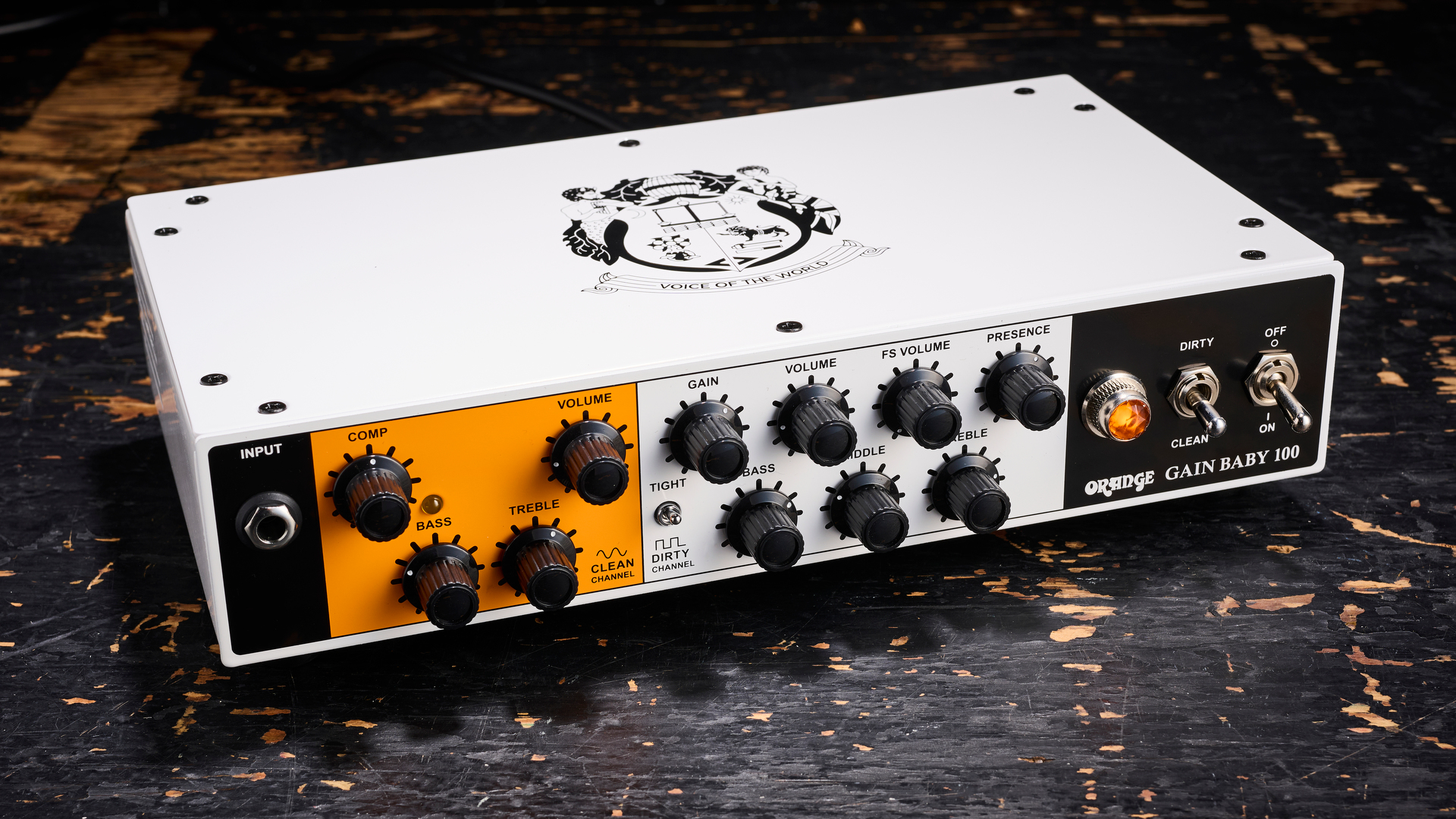
Orange Gain Baby 100
Finally, there’s the Gain Baby, which is home to the same clean channel with compressor as found in the Tour Baby. However the dirty channel is where this model differs from the Tour Baby by incorporating the tight switch already seen on the Dual Baby.
With tight engaged, the mid backed-off a little and lots of gain and presence, I achieved a righteous modern metal tone from a humbucker-equipped Explorer. The sound was ripping yet tight, with little to no sag in response to the most fiery picking this reviewer could muster.
The combination of a compressed clean sound with a super-saturated dirty tone capped off with a foot-switchable level boost, may likely make the Gain Baby a very strong proposition to modern metal players.
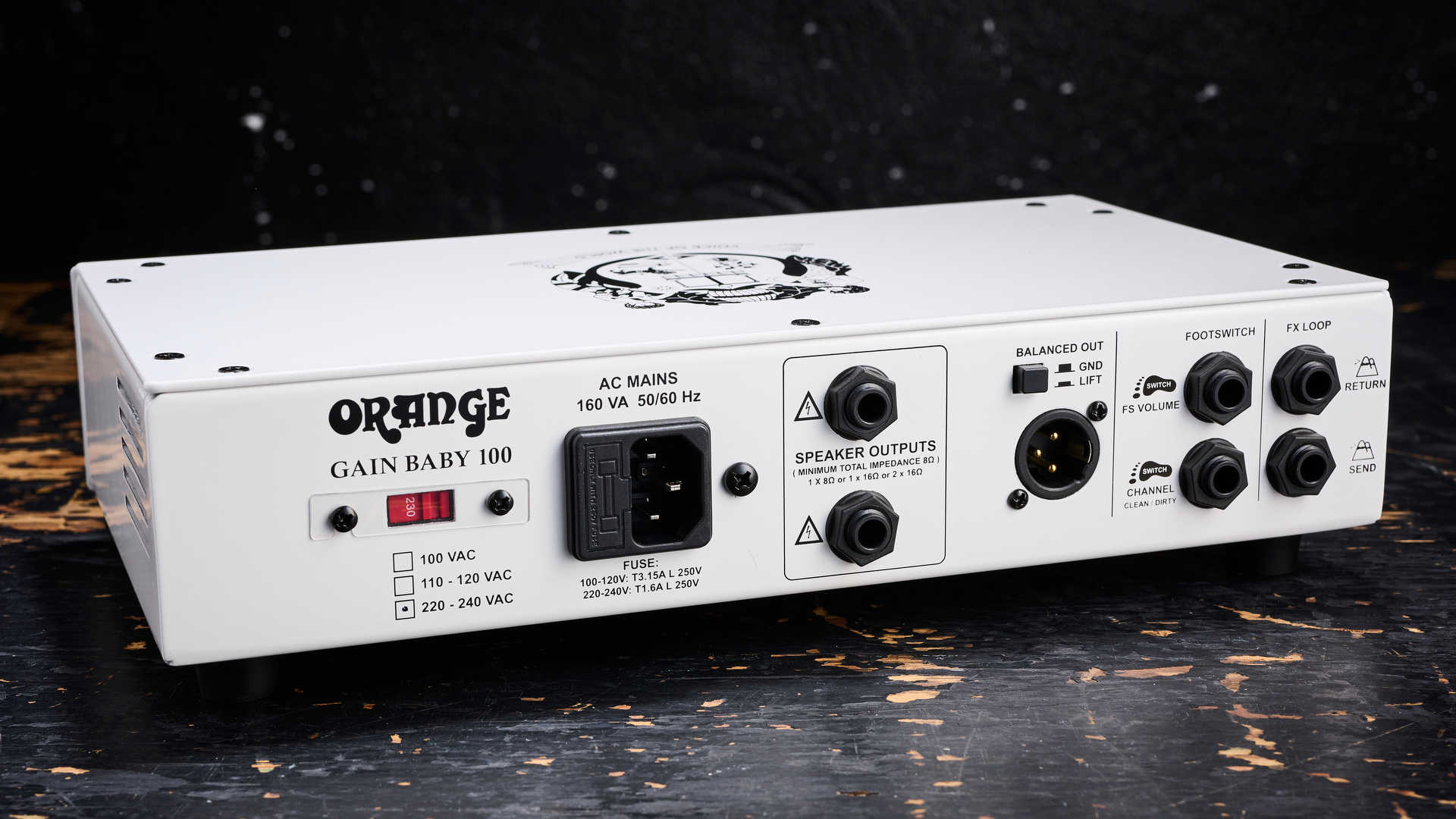
Verdict

The Class A/B power section has a responsiveness that is inviting and familiar to seasoned valve amp users
The tone these amps produce is classic Orange, with all the top-end presence and low-end grind that you’d hope for. The Class A/B power section has a responsiveness that is inviting and familiar to seasoned valve amp users, requiring little-to-no time to get used to. Any of these models would be excellent company on a gig where great tone, portability and plenty of stage volume are the requirements, however only time will tell if the three variations on the theme will each find a specific fan base.
It’s possible blues, punk and rock players may gravitate towards the Dual Baby, whilst the Gain Baby should have the metal fraternity enamoured by its cleans and screams. Perhaps out of the bunch, the Tour Baby, which shares almost identical controls to the Gain Baby with the omission of the dirty channel’s tight switch, could be seen as the more adaptable, all-rounder model.
Guitar World verdict: Here, Orange has distilled its distinctive tone and styling into a no-faff, highly practical gig solution for modern use. The sound is as impressive as expected and I can imagine them becoming perennial darlings of travelling bands and sound hire companies alike with good justification.
Orange Baby 100 Series | Results | Score |
|---|---|---|
Orange Dual Baby 100 | Hard-edged drive tones that will work well for blues, punk and garage rock. | ★★★★½ |
Orange Gain Baby 100 | Crystal-cleans with compression meets tight modern metal. | ★★★★½ |
Orange Tour Baby 100 | The most versatile of the three: clean channel with compression paired with classic drive sounds. | ★★★★½ |
Hands-on videos
Orange Amplification
Andertons
In addition to reviewing gear for esteemed publications Guitarist and Guitar World, Martin produces bands and artistes including Jarvis Cocker, Richard Hawley and Mercury-prize winning Ben Ottewell (Gomez). As a professional guitarist for 40 years, Martin has toured with luminaries including Groove Armada and Skid Row.
Recreating sonic history continues to be a chronic fixation and Martin regularly broadcasts his exhaustively researched tone-chasing content to a YouTube community of Edward Van Halen devotees.
You must confirm your public display name before commenting
Please logout and then login again, you will then be prompted to enter your display name.
